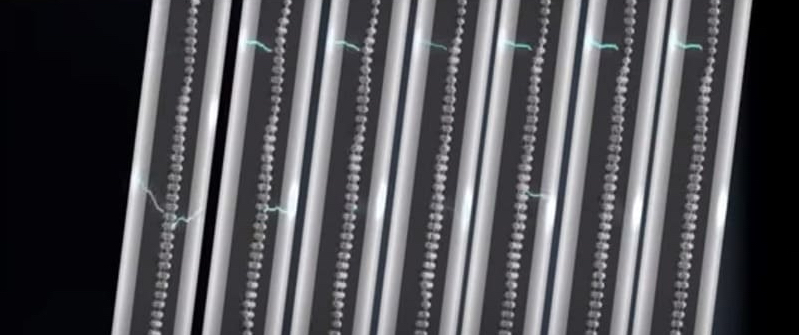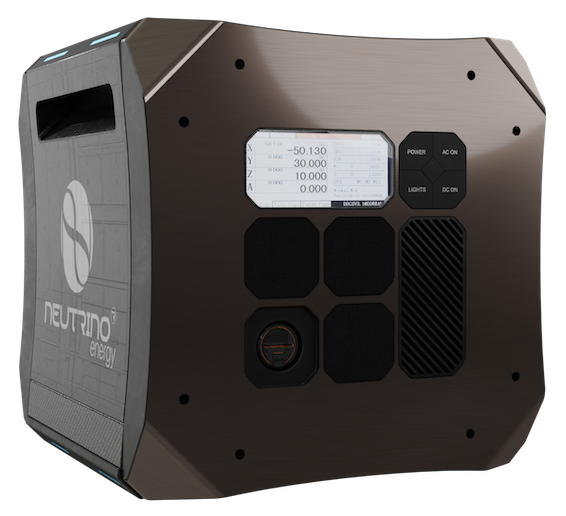Free and inexhaustible energy – a long-cherished dream comes true
In this article, we present products from the field of neutrino photovoltaics that are currently in the implementation phase. In the first part of our neutrino series, we described that the graphene lattice structure is crucial for the conversion of the kinetic energy of neutrinos and non-visible radiation. From the amount of incoming particles and radiation and the amount of energy actually converted, it follows that a thin layer can only convert a very small amount of energy usable for us in the form of direct current.
More power through enlargement of the surface
The great advantage of these extremely thin graphene-silicon layers: They can be stacked or packed one behind the other to increase the usable surface enormously. If about 4 volts of energy can be converted and made usable on one square metre of this meta-material (layer), 1,500 square metres (4 V x 1500 m²) yield 6 kilowatts. These extremely thin and stackable layers can thus be individually configured and implemented for a wide variety of applications and needs.

Power Cube: Green energy thanks to neutrinovoltaic
Neutrino Energy’s Power Cube, for example, requires 1,500 sqm of surface area to convert 5-6 kW of net continuous power. The doping of the nanomaterial is not only supposed to increase the power, but also to rectify the generated current so that it flows in the same direction. The energy converter can be placed in the house, basement and even 50 metres underground, because the neutrinos and the usable, non-visible radiation penetrate the earth effortlessly.

Here are some performance data and information on the Neutrino Power Cube (official information from the Neutrino Energy Group):
- Power (gross): approx. 6 … 7 kW
- Internal consumption: approx. 1 … 2 kW
- Power output (net): approx. 5… 6 kW
- Available voltages: AC 380 V (3-phase) and AC 220 V, DC 24/12 V and 5V (USB)
- Dimensions: approx. 800 x 400 x 600 mm
- Weight: approx. 50 kg
Super capacitors, a smaller battery unit and the control electronics are already implemented to provide a buffer for higher electricity use in the short term.
Neutrino Energy Group says: “In 2023/2024, two industrial plants are planned to be commissioned in Switzerland and Korea. While a small plant will be built in Switzerland (100,000 generators with a capacity of 5-6 kW), a mega-factory will be built in Korea, which is expected to reach an annual production capacity of 30 GW by 2029, with a further increase in production volumes.”

What are the prospects for the future?
Whether telephone, laptop, stationary computer, TV set, refrigerator, washing machine, dishwasher, coffee machine or toaster – the small energy units can be integrated into any device and operated completely independently of an external power supply or power cables. Completely self-sufficient, with a clean and inexhaustible energy source – neutrinovoltaic makes it possible.
Back to part 1: Neutrinovoltaic: Inexhaustible and clean energy source
Additional information
- Neutrino Energy Group News: neutrino-energy.com/newsroom
- Scientific Advisory Board for Neutrino Research: neutrino-energy.com
- Video about the Neutrinovoltaic Power Cube for self-sufficient household supply: energiewirtschaft.io
Electric motors and battery systems that use materials that completely dispense with rare earths and thus have a significantly lower impact on the environment::
- New super magnets instead of neodymium, made of iron stock (iron nitride): Firma Niron Magnetics
- Videos on new battery technologies without rare earths: 500Wh/kg Amprius – Aluminium-Sulphur – Sodium-Sulphur


